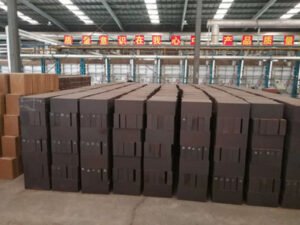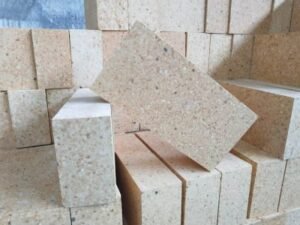Refractory materials play an indispensable role in our lives. Whether it is blast furnace smelting, glass manufacturing, or ceramic production, these magical materials are indispensable. So, what types of refractory materials are there? What are their performances?
What are refractory materials?
Refractory materials generally refer to inorganic non-metallic materials that can withstand high temperatures above 800°C. They not only cover natural ores, but also various products carefully crafted by special processes. These materials exhibit excellent mechanical properties and outstanding volume stability at high temperatures, making them the core components of various high-temperature equipment. Its wide range of applications can be described as a “jack of all trades” in the industrial field. No matter in which high-temperature operating environment, refractory materials play an indispensable role, ensuring the stable operation and safe production of equipment.

Types of refractory materials
1. Acidic refractory materials
Acidic refractory materials generally refer to those refractory materials with acidic oxides such as silicon dioxide (SiO2) as the main component. These materials include siliceous, semi-siliceous, fused quartz and recombined fused quartz refractories, etc., and their silica content is usually between 65% and 80%, and some are even higher, reaching more than 93%. The main feature of acidic refractories is that they can resist the erosion of acidic slag at high temperatures, but are easy to react with alkaline slag. This type of material is mainly composed of silicic acid or aluminum silicate, and it is easy to generate salt under high temperature and alkali, hence the name.
Acidic refractories are widely used, especially in the metallurgical industry, where they are used to make various refractory bricks, such as silica bricks and clay bricks. These refractory bricks can resist the erosion of acidic slag at high temperatures and are indispensable materials for high-temperature equipment such as industrial furnaces.
Acidic refractory raw materials mainly include siliceous and clay raw materials, and the main components are siliceous (SiO2 65%~98%) and silicoaluminous. These raw materials include quartzite, vein quartz, quartz sandstone, pyrophyllite and refractory clay, which are the basis for making acidic refractories.
2. Basic refractories
Basic refractories usually refer to those materials with magnesium oxide or magnesium oxide and calcium oxide as the main components. This type of material not only has a high refractoriness, but also exhibits excellent resistance to alkaline slag erosion. Some examples we are familiar with include magnesia bricks, magnesia-chrome bricks, chrome-magnesia bricks, magnesia-alumina bricks, dolomite bricks and forsterite bricks. Due to their unique properties, these materials have been widely used in basic steelmaking furnaces, non-ferrous metal smelting furnaces and cement kilns, and play an indispensable role.
3. Aluminosilicate refractory
This material is mainly composed of SiO2-Al2O3. According to its Al2O3 content, we can subdivide it into three categories: first, semi-siliceous, with an Al2O3 content between 15-30%; second, clay, with an Al2O3 content in the range of 30-48%; and finally, high-alumina, with an Al2O3 content of more than 48%. Such classification helps us to more accurately understand and select refractory materials suitable for specific application needs.
4. Fused-cast refractory
Fused-cast refractory refers to a refractory product with a specific shape that is melted at high temperature by a specific process, then poured and cooled to form. For example, the fused zirconium corundum refractory bricks commonly used in glass kilns are typical representatives of this process. Through this fusion-casting technology, we can obtain high-performance, precisely shaped refractory materials to meet the stringent requirements of various high-temperature industrial environments.

5. Neutral refractory materials
Neutral refractory materials refer to materials that are not easy to produce significant chemical reactions with acidic or alkaline slags under high temperature environments. Such materials include but are not limited to carbonaceous refractory materials, chromium refractory materials, and even in some cases, high-aluminum refractory materials are also included in this category. These neutral refractory materials have an irreplaceable and important position in high-temperature working environments due to their unique chemical stability.
6. Special refractory materials
Special refractory materials are a new type of inorganic non-metallic material. Its birth is based on the deep accumulation of traditional ceramics and conventional refractory materials. Through continuous research and innovation, this type of material has achieved significant breakthroughs and improvements in performance.
7. Amorphous refractory materials
Amorphous refractory materials are made of refractory aggregates, powders and a certain proportion of binders or specific additives. They can be used directly or added with an appropriate amount of liquid. This new type of refractory material does not require calcination, and its refractoriness reaches at least 1580℃, showing excellent high temperature resistance.
